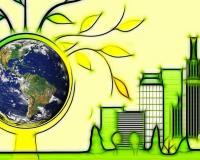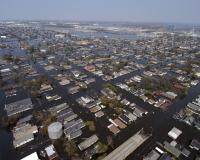
Vibrant Environment
Climate Change And Sustainability
All | Biodiversity | Climate Change and Sustainability | Environmental Justice | Governance and Rule of Law | Land Use and Natural Resources | Oceans and Coasts | Pollution Control

The Intergovernmental Panel on Climate Change’s (IPCC’s) latest reports do not bode well. The 2021 Physical Science Report, for example, emphasizes as its primary conclusion that “[i]t is unequivocal that human influence has warmed the atmosphere, ocean, and land.” The global average surface temperature increase since 1850 is about 1.07 degrees Celsius (1.93 degrees Fahrenheit), driven by anthropogenic greenhouse gas emissions.

Cities, the U.S. military, and private businesses are increasingly turning to artificial intelligence and analytical tools as they strive for greater resiliency amid growing incidents of climate-related flooding, heat waves, and other extreme events. In January, participants in the Environmental Law Institute’s 9th GreenTech webinar—“Technology and Climate Resiliency”—discussed these developments and the incentives for adoption of cutting-edge tools and various impediments.

Part III of this four-part blog series discussed common shortcomings to avoid in developing climate plans and examined two instances of legal challenges to county plans in California.


Part I of this four-part blog series provided an overview of local climate planning and elements common to most plans. This article distinguishes the components of a mitigation plan from those of an adaptation plan.

Local governments can play a critical role in reducing greenhouse gas (GHG) emissions and preparing their communities for projected climate change impacts. These governments are well-positioned to assess local climate hazards and risks, identify opportunities to reduce GHG emissions, and engage the community in identifying priorities. Crucially, they are the first responders to public health emergencies and extreme weather events and possess powerful tools over land use and the built environment.

Part 1 of this two-part blog series explored the history and current use of carbon, capture, and storage (CCS). Part 2 discusses the policy challenges that limit CCS use and how these policies can be improved to expand it.
The biggest question is: if CCS can reduce carbon dioxide emissions so drastically, why isn’t everyone implementing it?

Avoiding the worst effects of climate change—including drought, food insecurity and unprecedented migration—means limiting global temperature rise to 2°C (the Paris Agreement sets a more ambitious 1.5°C goal). A number of technologies are being pursued to help solve the climate crisis including carbon capture and storage (CCS).

In a recent episode of People Places Planet Podcast, Research Associate Heather Luedke spoke with John R. Nolon, land use law expert and Professor of Law at Elisabeth Haub School of Law at Pace University, to discuss the emerging crisis of “land use climate bubbles.” Land use climate bubbles, which form when property values decline due to climate change impacts, have been popping up across the United States and could lead to an economic crisis worse than the 2008 housing bubble.

The transition to a zero-carbon economy depends, we are told, on the United States’ ability to assure a supply of rare earths and minerals such as cobalt, nickel, or lithium. Dialogues surrounding critical minerals have intensified over the past decade, and the International Energy Agency suggests we are on track for either doubling or quadrupling our “overall mineral requirements for clean energy technologies by 2040.”